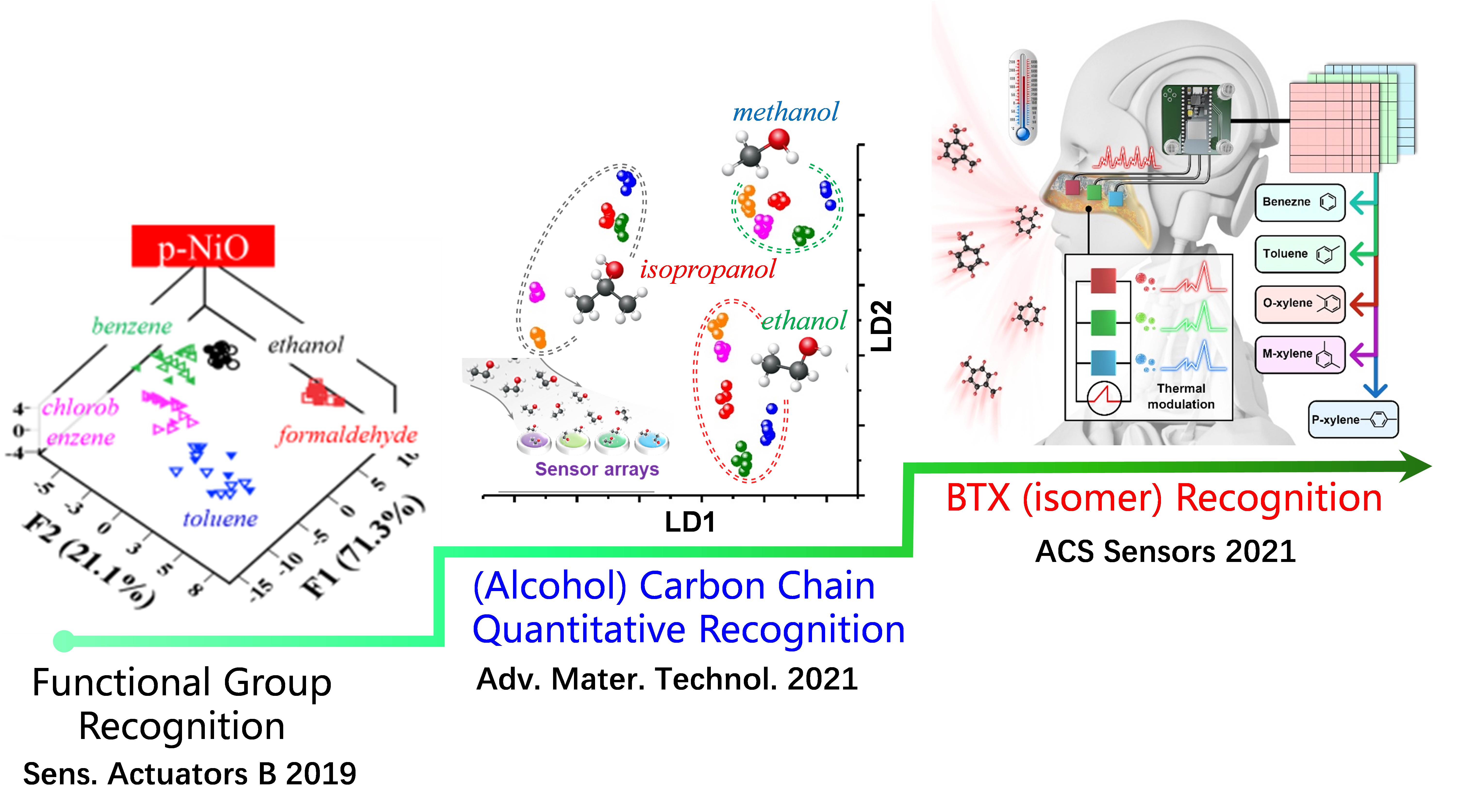Researchers led by Prof. MENG Gang from the Hefei Institutes of Physical Science (HFIPS) of the Chinese Academy of Sciences identified five volatile organic compounds (VOCs) with different functional groups, and they developed a smart system to accurately identify five BTX (benzene, toluene, and three xylene isomers) molecules.
VOCs are the most common pollutant discharged. Its monitoring is of great importance for controlling air pollution. As for VOCs monitoring, metal oxide semiconductor VOC sensors stands out for being compact and low-cost compared with other monitoring tools. However, it shows poor selectivity because it has a wide scope for redox reaction, many gases can react with its surface. Especially for VOCs molecules, which limits its applications.
P-type oxides sensor, as one of the metal oxide semiconductor VOCs sensors, it has excellent catalytic oxidation properties toward VOCs. The researchers first investigated the p-type NiO sensor by a thermal modulation to confirm its great ability to recognize VOCs. In their experiment, the sensor could identify five VOCs with different functional groups.
Then, they pushed their work further to improve the recognition capability of NiO-based sensor arrays and expanded the number of NiO based sensors by series of extrinsic doping with the support of a unique programmed cooling temperature modulation waveform, through which the recognition capability was greatly enhanced.
This new assembling helped to achieve the quantitative recognition of three alcohol VOCs with similar structure, properties and concentrations via extracting the subtle features of tested VOCs.
Moreover, based on their previous work, the researchers developed another smart recognition system with thermal modulation, including sensor arrays, electronic circuits, and Wi-Fi modules, which can quickly, stably and accurately identify five BTX molecules, as well as a group of VOCs, in an ambient air background.
These results highlight that appropriate thermal modulation offers a powerful route in extracting the feature differences of VOCs molecules with similar structures, and provides new way to explore advanced VOCs recognition electronics.







